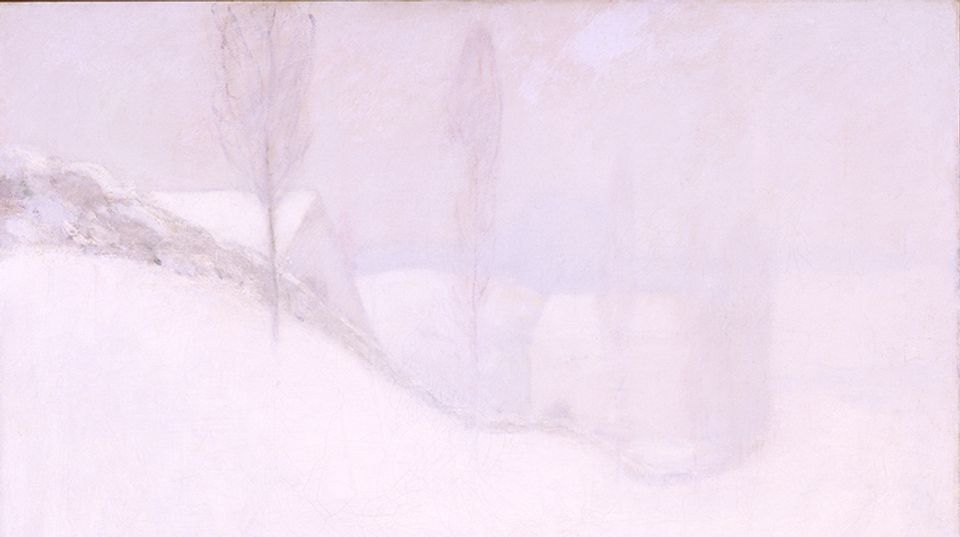The exhibition Nam June Paik: Global Visionary opens at American Art on December 13, 2012. This is a complicated installation with artworks that involve a mix of old and new technology, robots made from TVs, and even several hundred plants, and staff has been working hard behind-the-scenes to get everything ready. I grabbed a few minutes with Michael Mansfield, associate curator of film and media arts, to talk about Nam June Paik's TV Crowns, which had just been installed. There are three TV Crowns in the exhibition. Each one has a CRT (cathode ray tube) television mounted on a pedestal with two audio generators below. On each screen is a different pattern of oscillating red, green, and blue lines.
Eye Level: Tell me about this installation.
Michael Mansfield: Here we have an installation of three of Paik's TV Crowns. TV Crowns are pretty rare. They required Nam June Paik to disassemble television sets and reassemble them using components from multiple televisions. By investigating the inner workings of the televisions, he was able to manipulate the electronics to come up with these complex formal compositions appearing on the screen. This section of the exhibition demonstrates his deep understanding of the technology and his intimate understanding of the television set itself. Remember, this was conceived in 1964! This was groundbreaking work at the time and had not been explored by any other artist.
EL: Nam June Paik is often described as the father of video art, but what we're looking at here is not actually video. Can you explain what we're seeing?
MM: This is distinctly not a video piece. Paik was using a television set in a way that it had never been used before. A television set is intended to display an image fed to it by broadcast, a camera, or other video device. This is not what is happening here —there is no recording and there is no playback device. What Paik was doing is revealing the technology itself, and interrupting it. He used audio generators (which can be seen below each television set) to create an audio signal, which is fed through an amplifier to the cathode ray tube which generates the pattern. It's complicated, but you are essentially seeing an audio signal interpreted through the inner workings of the television set.
EL: Can you change the pattern or the colors?
MM: Light generating electronics like these use three colors – red, green, and blue. So what you’re seeing here are the red, green, and blue CRT pixels inside the television. The white is where those lines intersect. By adjusting the audio generators, you can change the way the pattern is displayed. Increasing and decreasing the signal amplitude changes the pace and cadence of the artwork on the screen. Also, you'll notice that each of the three TV Crowns uses a different television model. The way that each television presents the signal pattern is dependent on the model and the technology of the CR tube used.
EL: Where does the title come from?
MM: The audio signal creates a pattern that looks like a crown. It's a little larger than life-size - it looks like something you can put on your head.
EL: Why is this work important?
MM: Think about how artists such as Jackson Pollock, Mark Rothko, and Morris Louis experimented with the material of paint in the 1940s and 1950s. They explored how it dripped and flowed, and how it interacted with different surfaces. This opened entirely new modes of expression, new ways of understanding ourselves and our relationship with the world around us. Exploring the medium itself, its tactile qualities, became really important to their work as artists. This is exactly what Nam June Paik was doing with televisions and technology in the 1960s. He was experimenting with technology itself as an artist's medium to see what it could bring to the global conversation.
Nam June Paik: Global Visionary opens on December 13, 2012 and runs through August 11, 2013.


















